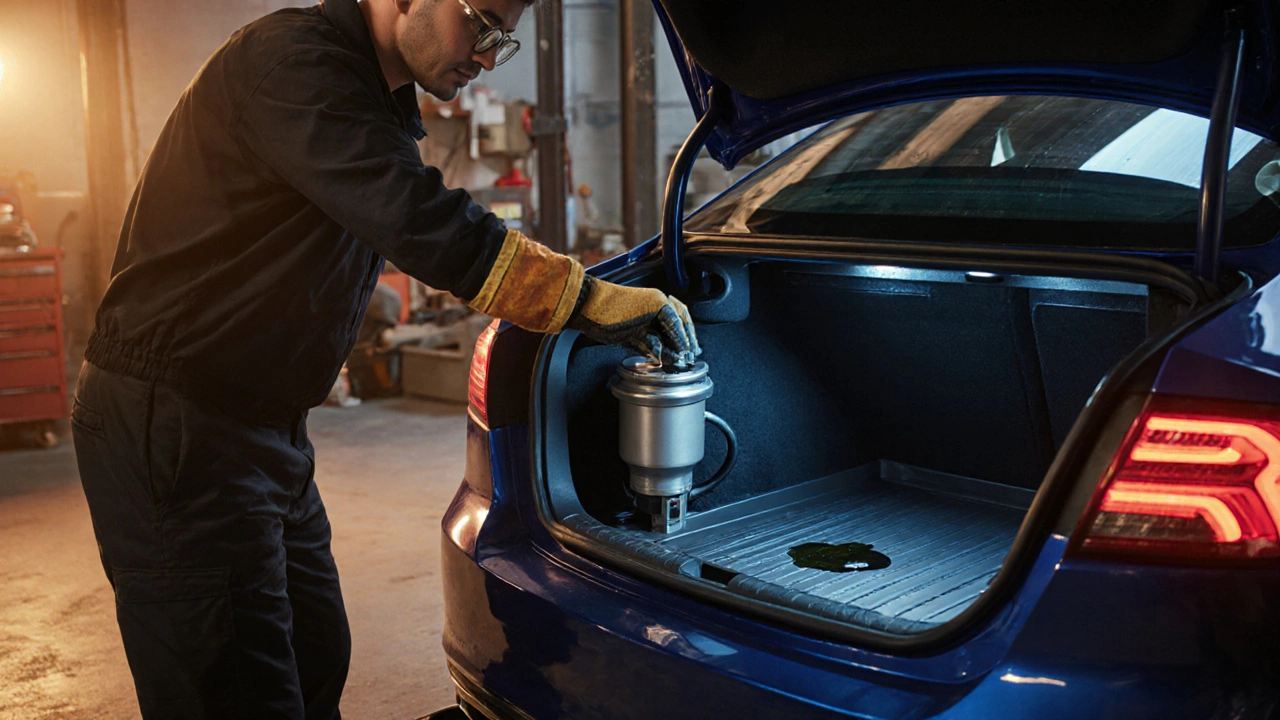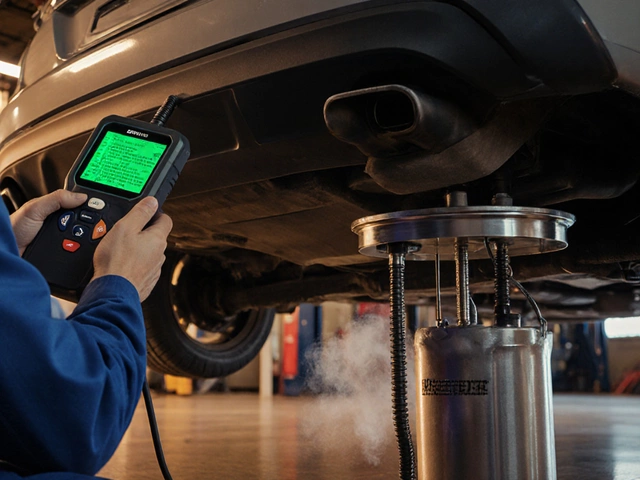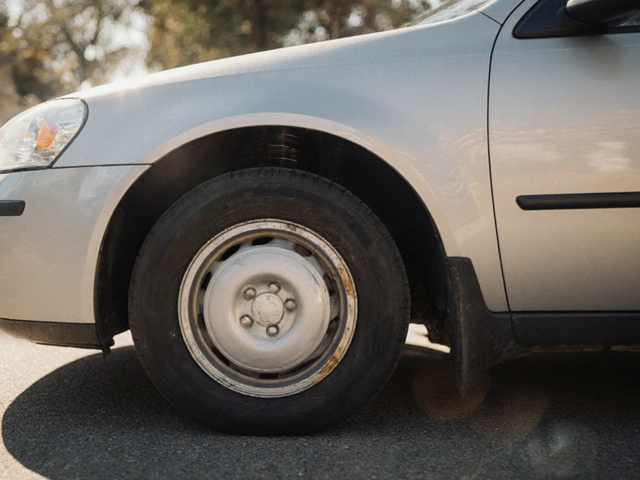Fuel Pump Replacement Risk Calculator
Risk Assessment Tool
This tool helps you assess the safety risk of replacing a fuel pump without fully draining the tank. Enter your vehicle's details and available tools to receive a risk score and safety recommendations.
When a fuel pump fails, the instinct is to get it swapped out fast. But before you pop the pump out, you’ll hear a common question: do you really need an empty fuel tank? The answer is a mix of safety, practicality and the design of the pump you’re dealing with. Below we break down why a near‑empty tank is usually the safest route, what risks you face if you skip that step, and how to work around a full tank when you’re in a pinch.
Understanding the Role of the Fuel Pump
Fuel pump is a mechanical or electric device that moves gasoline from the tank to the engine at the pressure needed for proper combustion. Modern cars almost always use an electric sub‑mersible pump mounted inside the tank. Because the pump sits directly in the fuel, any leak or over‑pressurisation can quickly turn a simple repair into a fire hazard.
Why an Empty Tank Matters
The main reasons mechanics advise draining the tank are:
- Reduced fuel pressure - a full tank keeps the pump under constant load, making it harder to disconnect without spilling.
- Spill containment - even a few drops of gasoline on hot engine components can ignite.
- Access - a full tank often means the pump is surrounded by a rigid fuel rail or shield that must be removed.
When the tank is virtually empty, the suction side of the pump is exposed, letting you pull the pump out with minimal resistance. It also lets you safely disconnect fuel lines without a pressurised spray.
What Happens If You Skip Draining the Tank?
Attempting a pump swap with a full tank can lead to:
- Fuel leakage - disconnecting the high‑pressure line while the tank is still pressurised often results in a sudden gush of gasoline.
- Fire risk - gasoline vapour is heavier than air and can collect in the engine bay; a spark from a tool can ignite it.
- Damage to the pump - pulling the pump out against fuel pressure can bend the pump shaft or damage internal seals.
Even if you manage to avoid a fire, a partial spill means extra cleanup, wasted fuel and a possible foul smell lingering in the cabin for weeks.
Step‑by‑Step Guide to Replacing a Sub‑mersible Fuel Pump
- Gather safety gear - fire‑proof gloves, safety glasses, and a spill‑catch pan.
- Relieve tank pressure. Locate the fuel pressure regulator (often attached near the rail) and loosen the pressure bleed screw.
- Disconnect the battery to eliminate any electrical sparks.
- Drain the tank. Use a siphon pump or a fuel extraction kit to pull out most of the gasoline until the tank is about 10‑15% full.
- Remove the rear seat or access panel to reach the fuel pump module.
- Unbolt the fuel pump retaining ring and carefully lift the module out of the tank.
- Detach the fuel lines and electrical connector. Use a fuel line disconnect tool to avoid tearing the hose.
- Swap in the new pump, reinstall the retaining ring, and reverse the steps.
- Re‑pressurise the system by turning the ignition on for a few seconds (without starting the engine) to check for leaks.
Following this routine keeps the job under control, even if you’re working in a cramped garage.
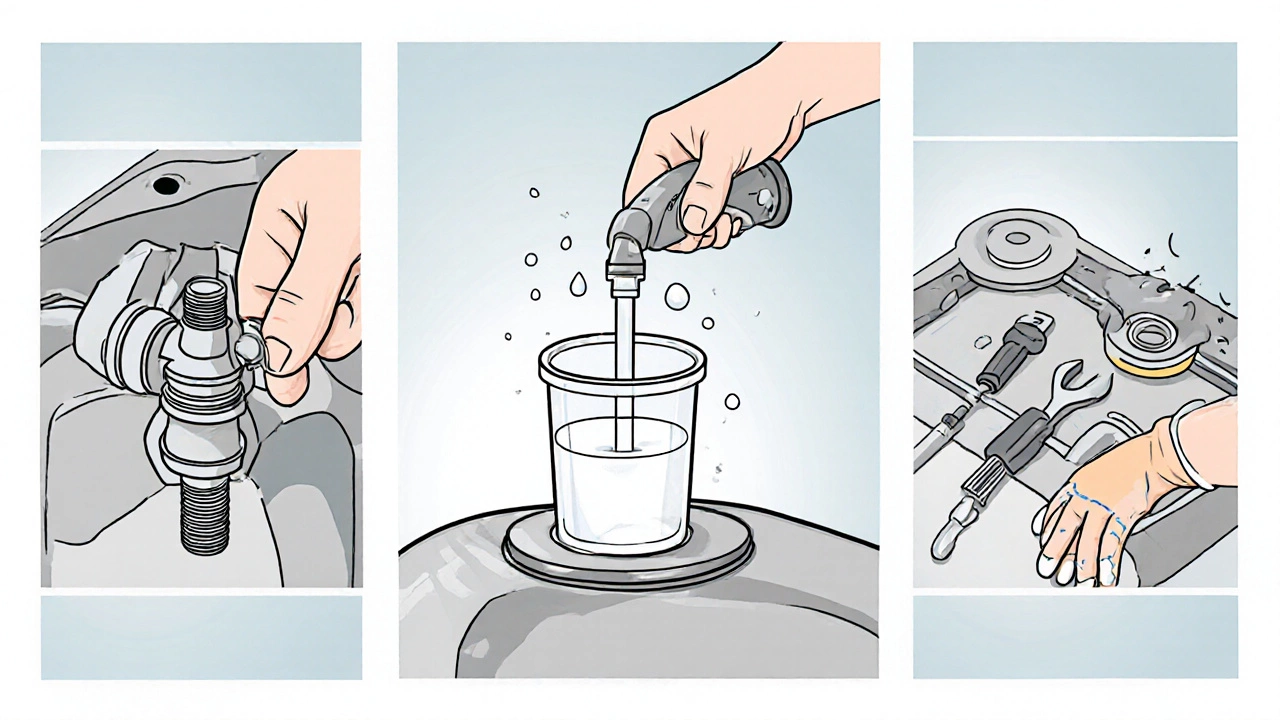
When You Can’t Empty the Tank
Sometimes the vehicle is in a remote location, or the fuel system is sealed in a way that makes drainage impractical. In those cases, you have two main options:
- Use a pump removal kit. These kits include a suction side extractor that lets you pull the pump out while the tank remains full. The kit seals the fuel line, preventing spillage.
- Partial drain and pressure relief. Remove as much fuel as possible (often 50% is enough) and then use a pressure‑release valve to lower internal pressure before disconnecting the pump.
Both methods require extra caution - work in a well‑ventilated area, keep a fire extinguisher nearby, and double‑check that all fuel lines are capped before you finish.
Tools and Equipment Checklist
| Tool | Purpose | Typical Cost (AU$) |
|---|---|---|
| Fuel siphon pump | Extract fuel safely | 30‑50 |
| Fuel line disconnect tool | Separate high‑pressure lines without damage | 20‑40 |
| Torque wrench | Secure retaining bolts to spec | 60‑120 |
| Fire‑proof gloves & glasses | Personal protection | 15‑25 |
| Pump removal kit (optional) | Extract pump with tank full | 120‑200 |
Pros & Cons: Empty Tank vs. Not Empty
| Factor | Empty Tank | Full/Partial Tank |
|---|---|---|
| Safety | High - minimal fuel spillage, lower fire risk | Moderate - requires extra precautions |
| Time | Longer - need to drain fuel | Shorter - skip draining step |
| Complexity | Simple - pump free of pressure | Complex - use special tools, watch for leaks |
| Cost | Low - no extra kits required | Higher - may need pump removal kit |
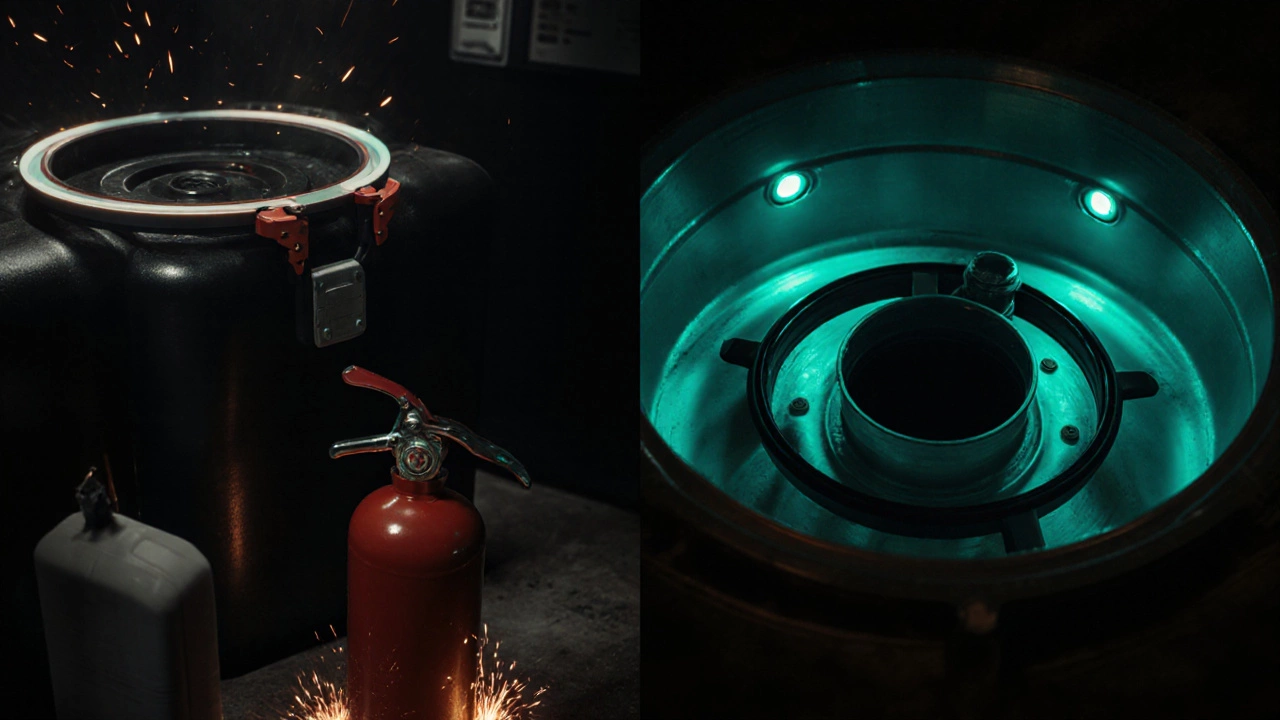
Common Pitfalls and Pro Tips
Even seasoned DIYers slip up. Here are the mistakes that turn a routine job into a nightmare, plus quick fixes:
- Forgetting to disconnect the battery. A stray spark can ignite vapour. Always pull the negative terminal before you start.
- Skipping the pressure bleed. The tank stays pressurised even after fuel is siphoned. Use the regulator bleed screw or a fuel‑line disconnect tool with a vent.
- Re‑installing the pump backwards. Some pumps have a flow direction arrow. Double‑check before you bolt it in.
- Using the wrong hose clamps. Clamp too tight and you could crush the line; too loose and you’ll see leaks. Torque‑spec the clamps if possible.
- Neglecting a post‑install test. Run the engine a few minutes and watch for fuel smell or puddles. If anything looks odd, shut it down and re‑inspect.
Bottom Line
In most cases, draining the tank-or at least getting it down to a minimal level-is the safest, cheapest way to replace a fuel pump. It removes pressure, cuts down on spill risk, and lets you work with the pump in a relaxed manner. When you can’t empty the tank, a dedicated pump removal kit and strict safety steps can still get the job done, but the margin for error shrinks dramatically.
Frequently Asked Questions
Do I need to completely drain the fuel tank?
You don’t have to get every last drop, but reducing the tank to around 10‑15% of capacity makes pressure relief much easier and greatly lowers the chance of a fuel spill.
Can I replace the pump with the tank still full?
It’s possible with a special pump removal kit that seals the fuel lines while you extract the pump. However, you’ll need extra safety gear and should be comfortable working under pressure.
How long does the whole process usually take?
If you’re draining the tank, expect 2‑3hours total - time to siphon, replace the pump, and re‑pressurise. Without draining, you might finish in 1‑1.5hours, but the risk factor goes up.
What safety equipment is essential?
Fire‑proof gloves, safety glasses, a spill‑catch pan, and a suitable fire extinguisher (ClassB) are must‑haves. A well‑ventilated workspace is also critical.
Do I need any special tools for modern cars?
Most modern cars require a fuel line disconnect tool and a torque wrench. If you’re avoiding a full drain, a pump removal kit is the only additional tool you’ll likely need.
